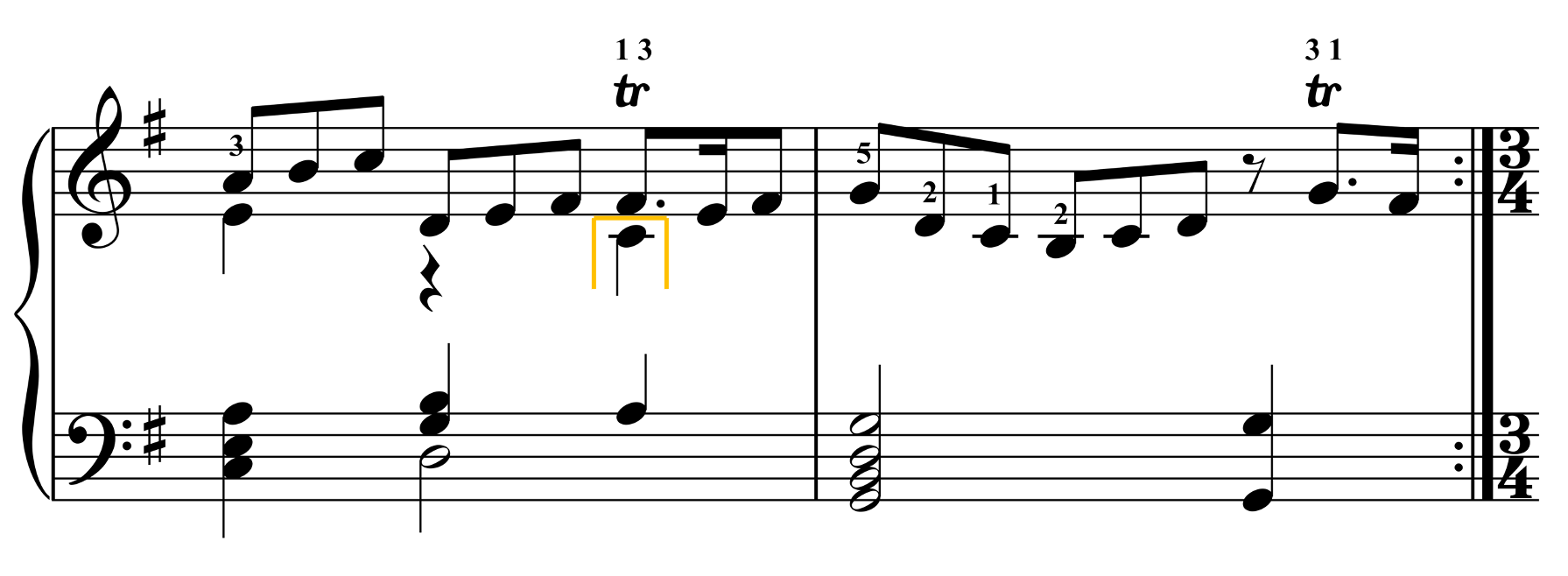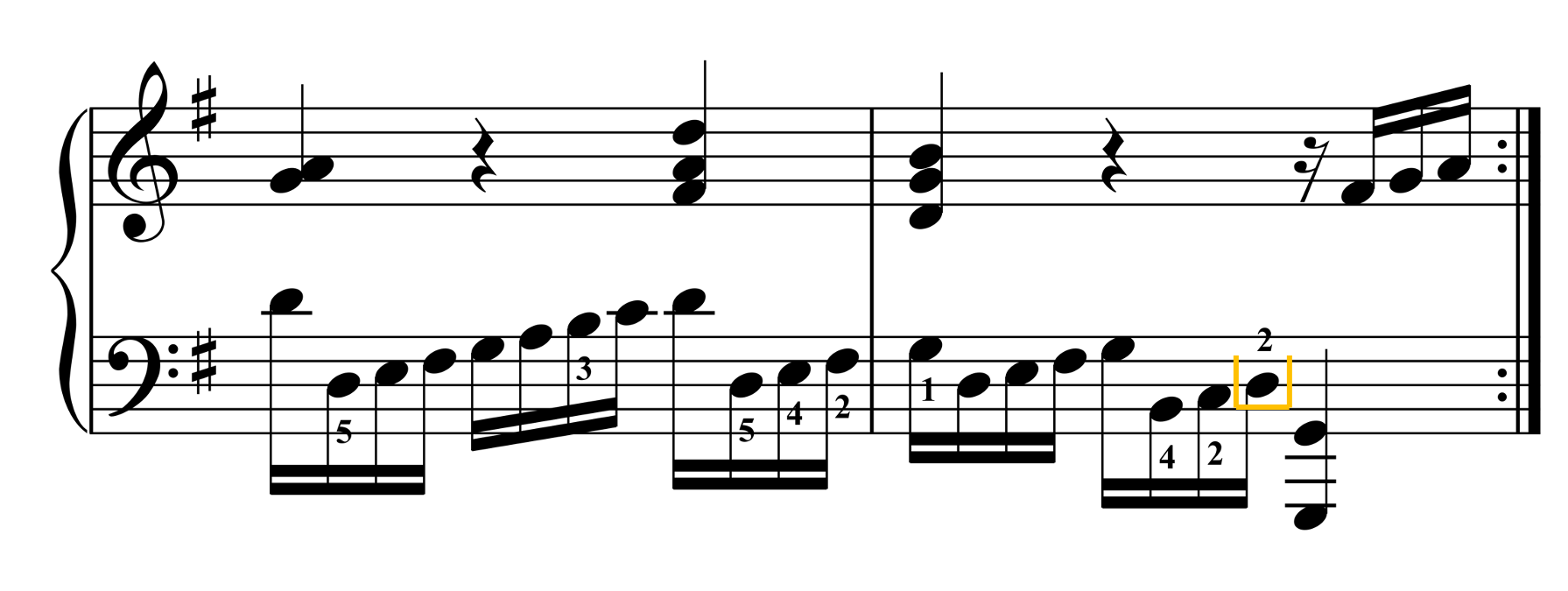Submitted by Josh Condon
Published on 6/15/2020

Submitted by Josh Condon
Published on 6/15/2020

Submitted by Josh Condon
Published on 6/15/2020

Submitted by Josh Condon
Published on 6/15/2020

Submitted by Josh Condon
Published 6/15/2020

“This redistribution frees the right hand to use strong fingers on the trill.”
Submitted by Michael Clark
Published on 2/15/2020

“Taking the F-sharp in the left hand eliminates a the position shift after the trill.
Submitted by Michael Clark
Published on 1/1/2020

“I choose to play this trill with the right hand. The left then takes over for the chords, freeing the top voice for additional ornamentation.”
Submitted by Michael Clark
Published on 1/1/2020

“Taking the C in the left hand frees the right hand to use a more brilliant fingering (1 on G and 3 on F-sharp) for the trill.”
Submitted by Michael Clark
Published on 1/1/2020

“The left hand can assist this descending line to ensure a graceful conclusion.”
Submitted by Michael Clark
Published on 1/1/2020

“It’s awkward to reach the D-sharp in the left hand but the right hand can help.”
Submitted by Michael Clark
Published on 3/17/2020

“If the left hand notes are out of reach, they can be taken into the right hand.”
Submitted by Michael Clark
Published on 3/17/2020

“Taking the E in the left hand facilitates a more reliable fingering for the ornament.”
Submitted by Michael Clark with thanks to Robert Roux
Published 1/11/20

Submitted by Hannah Roberts
Published on 3/8/2023

Submitted by Melinda Smashey Jones
Published on 12/29/2020

Submitted by Melinda Smashey Jones
Published on 12/29/2020

Submitted by Melinda Smashey Jones
Published on 12/29/2020

Submitted by Melinda Smashey Jones
Published on 12/29/2020

Submitted by Melinda Smashey Jones
Published on 12/29/2020